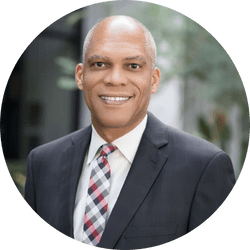Last month, in the opening piece to the Inclusion segment of The Great Rethink, Ron Schiller talked about the difference between Inclusion and Diversity. It’s an important distinction, and one worth revisiting.
To be effective, the conversation about Inclusion has to be both broad and deep, starting with an acknowledgement that merely adding diversity to a team does not guarantee the true “Inclusion” that today’s candidates are looking for. As Ron put it:
“The key to moving forward on Inclusion is to recognize that Diversity merely requires the presence of diverse voices, ideas, experiences, and backgrounds. True Inclusion requires that those voices are listened to and valued. That they feel that they belong. That their contributions are received, and then allowed to have a positive impact – on the team, and in the organization in pursuit of its mission. In short, Inclusion means that those diverse voices are empowered to make a difference.”
Most organizations have been living and breathing the DE&I conversation for years, spurred on by Human Resource departments and evolving organizational policy –- like statements on equal opportunity, or valuing diversity. And based on conversations with hiring managers, we trust and believe that they want to be more inclusive in attracting diverse pools of candidates.
But in most cases, when you dig below the surface, the DE&I effort stops at the hiring decision. It rarely extends to how individuals, teams, and leadership operate within the organization – where the rubber hits the road, after the candidate is hired.
That is where true Inclusion is achieved. That is what will attract a diverse pool of candidates to want to apply. And that is where we can offer a few thoughts about how to move the needle, based on extensive experience with both hiring organizations and candidates.
1) Take an honest and critical look at the work culture of your organization, and your role in creating it, with respect to true Inclusion.
That is an intuitive look that most leaders should be able to take for themselves, without a PowerPoint presentation or a spread sheet from HR. For example, if the vast majority of people of color in your advancement shop have been sitting in entry-level administrative positions for years, why is that? If you’re not attracting diverse staff, or can’t keep them, again, why?
Before applying for a role, especially a senior role, candidates from historically excluded communities will look at an organization and ask: Do they really want someone like me? Are they ready to embrace someone like me? Can they accept my different experiences, hear a different point of view, and allow me to contribute something they don’t already have? They will look closely, not merely take a hiring manager’s word for it.
Try to see your own organization through their eyes. If you were them, how would you feel about joining, and what would the work experience be like afterwards?
2) Consider whether you can change your view on “cultural fit” and start thinking in terms of “cultural add.”
A red flag goes up in the Inclusion conversation when hiring organizations ask for a diverse or inclusive candidate pool and then immediately start talking about “cultural fit.” That’s a clue that the organization wants Diversity but might not be ready for Inclusion.
The word “fit” is an exclusive term that preferentially favors ideas, approaches, and points of view that conform to the existing status quo. Whereas true Inclusion requires that the organization evolve as it embraces and integrates people with new ideas, perspectives, and lived experience. Moreover, Inclusion empowers those people to add value in their own unique way, in pursuit of the mission.
Inclusion can often change an organization for the better as it helps add new ways of thinking, new strategies, new donors, new program beneficiaries, new stakeholder communities, etc.
The entire point of Inclusion is that it brings into the organization new ideas that it has not had access to before – sometimes challenging the organization to stretch, evolve, and grow.
3) Be as transparent as possible across a range of issues related to true Inclusion.
Transparency can feel very vulnerable and uncomfortable for hiring organizations. But in truth, that’s how candidates in historically excluded or marginalized groups feel every time they apply for a position. It would behoove hiring organizations to meet them at least half-way.
For example, salary transparency can be a crucial factor in the application decision: people who may have suffered salary discrimination in the past often hesitate to apply for positions with no published salary range. Why? Because they won’t know what to ask for, or whether all candidates are being offered the same range. Basing their new salary on their old salary, rather than an objective range, risks perpetuating existing inequity compared to their peers.
Also, the field of advancement has not been very diverse, historically, and likely very few organizations would claim to be where they want to be on their Inclusion journey. So, don’t be afraid to share where you truly are on this journey. Many candidates are willing to be “the first” at an organization, as long as they are sure that the organization is committed to the cause of Inclusion, that they will be able to bring themselves fully to the role, and that Inclusion won’t stop with them.
4) Leaders have to lead and cannot expect employees who work under them to do the Inclusion work for them.
This is a critical point. Many times, leaders push Inclusion work down into working groups or advisory groups, often made up of the very people who have been historically marginalized or excluded. Such leaders are essentially telling these employees: fix this problem for me.
In truth, Inclusion is a leadership issue that needs to be solved by leaders. There are strong, talented, inclusive pools of candidates who want to make a contribution to your organization. What gets in the way? Often it’s conscious and unconscious bias, resistance, fear, unfamiliarity, and a range of other issues related to how leaders receive and process those contributions.
While staff members can help, and their perspectives and input are essential, leaders are the ones with the power to include or exclude people and ideas. Therefore, the most impactful Inclusion work is often done at the leadership level.
5) See candidates and staff not just as employees, but as whole people.
The entire point of Inclusion is that it brings into the organization new ideas that it has not had access to before – sometimes challenging the organization to stretch, evolve, and grow. But those new ideas are based on the lived experience of those candidates. And as we have all learned over the past few years, life and work are mutually bound together and need to be balanced.
If you hire inclusively, what kind of community will your new staff member and their family be moving to? Will they feel accepted and valued in the community, outside the office? Will they feel a sense of belonging that makes them want to stay?
It’s a stretch, and even somewhat innovative, but employers need to think about the entire spectrum of considerations and challenges that the employee will face, not just at work, but in their lives. We had one hiring organization, in a region not known for its diversity, fly a candidate and their family in for a weekend to get to know the community and see that they could thrive there.
These are not issues or questions that employers typically have had to consider. But if you want diverse candidates to join your organization and stay, you have to be prepared to look at the world in diverse ways, and do your best to help each staff member succeed.
Ultimately, the key point that hiring organizations need to understand is that the job market has shifted. Inclusion is a key priority for all candidates, and these days, any messaging about Inclusion is met with a higher level of skepticism and scrutiny.
Based on our search work, we can state emphatically that in almost all cases, there is a diverse pool out there. The biggest questions hiring organizations need to answer are: How attractive is your organization and what have you done to make it a great place for these candidates to join? And how committed are you to the Inclusion journey? That is, what work is the organization and its leaders willing to do, to take full advantage of what candidates from diverse backgrounds bring – respecting their full selves and their ability to add value to your mission?
Curious to learn more? Read the next article in our series here.
Contributing authors:

Steven Wallace, Senior Consultant and Vice President for Stewardship and Strategic Partnerships, Aspen Leadership Group

Jeanette Rivera-Watts, Director for Search Management and Search Consultant, Aspen Leadership Group


